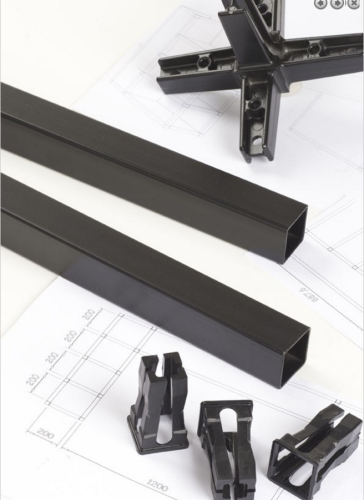Okay, if like me you've been an avid reader all your life and never get rid of any books because you might get around to reading them all again, some day, you've probably got a couple of bookcases in your house.
I literally have no idea how many books I have, last time I counted was when I was around 17 and it was around 250 at that point, I'm 42 and got about three full height billy bookcases from IKEA filled up, two half height billy bookcases, and one full height half width billy bookcase, all filled up with books (and some models of various types too on two or three different shelves). I dread the idea of trying to count all the books I have now.
But this brings up the problem I'm hoping someone might have a solution for. And for once with Billy Bookcases it's not the backing sheets. I've replaced most of those with single sheets of much stronger, sturdy board, that's helped stiffen them all up, and drilling through the wood of one bookcase to another has added structural strength. But, I have lots of large hardback books, over a range of topics, and as you might imagine, it's causing the shelves to start sagging. Even the permanent middle shelves...
Obvious thing to do would be to move these biggest books to the bottom shelves to spread out the load, but there's far too many Big Books for this work.
I have thought about getting some metal supports brackets in at each end of the shelves, but I have my doubts this will work. I did pay a trip to a large National Trust property where the houses library had came up with the solution of bracing each shelf with a large piece of wood in-between each shelf, so maybe some combination of these two might work?
Then there is the idea of buying better quality bookcases, but I just don't have the cash for that right now.
So, I'm sure someone here must have come across this same, most deadly issue all book lovers must have, and hopefully came up with some sort of solution for it that works.
I literally have no idea how many books I have, last time I counted was when I was around 17 and it was around 250 at that point, I'm 42 and got about three full height billy bookcases from IKEA filled up, two half height billy bookcases, and one full height half width billy bookcase, all filled up with books (and some models of various types too on two or three different shelves). I dread the idea of trying to count all the books I have now.
But this brings up the problem I'm hoping someone might have a solution for. And for once with Billy Bookcases it's not the backing sheets. I've replaced most of those with single sheets of much stronger, sturdy board, that's helped stiffen them all up, and drilling through the wood of one bookcase to another has added structural strength. But, I have lots of large hardback books, over a range of topics, and as you might imagine, it's causing the shelves to start sagging. Even the permanent middle shelves...
Obvious thing to do would be to move these biggest books to the bottom shelves to spread out the load, but there's far too many Big Books for this work.
I have thought about getting some metal supports brackets in at each end of the shelves, but I have my doubts this will work. I did pay a trip to a large National Trust property where the houses library had came up with the solution of bracing each shelf with a large piece of wood in-between each shelf, so maybe some combination of these two might work?
Then there is the idea of buying better quality bookcases, but I just don't have the cash for that right now.
So, I'm sure someone here must have come across this same, most deadly issue all book lovers must have, and hopefully came up with some sort of solution for it that works.


